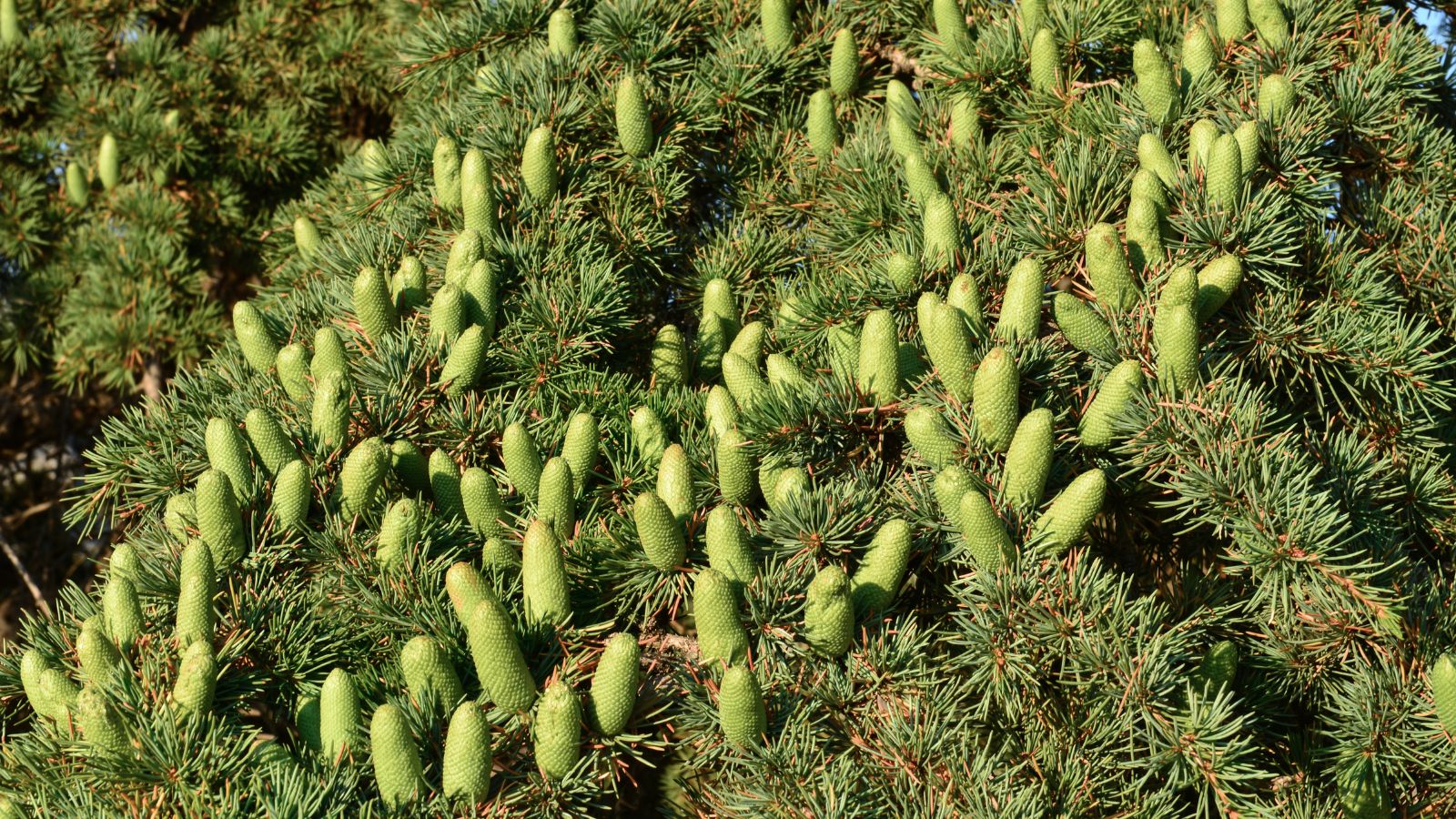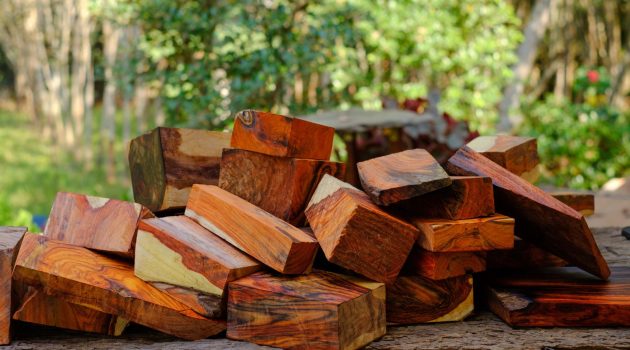Cedarwood essential oil is a natural product derived from the wood of cedar trees, offering a range of uses for wellness and in the home.
The warm, woodsy scent of cedarwood oil makes it a popular choice for aromatherapy, while its properties are thought to be beneficial for skin, hair care, and relaxation.
Making your own cedarwood essential oil can be an enriching experience as it allows you to create a pure, chemical-free product while also understanding the process behind extracting these aromatic compounds.
The extraction of cedarwood essential oil typically involves distillation, a method that captures the essence of cedarwood efficiently.
Home steam distillation, while requiring specific equipment, allows for this process to be carried out in your own space.
The steps involve careful preparation of the cedarwood, followed by distillation to separate the oil from water vapor.
Attention to detail and patience are key, as the process can take several hours but results in a versatile essential oil that can be used for a variety of purposes.
Key Takeaways
- Cedarwood essential oil is extracted from the wood of cedar trees and used for various health and wellness purposes.
- The oil can be made at home using steam distillation, requiring careful preparation and specific equipment.
- It’s important to use cedarwood essential oil safely and be informed about proper application and potential skin sensitivity.
1. Benefits of Cedarwood Essential Oil
Cedarwood essential oil offers a myriad of benefits, ranging from enhancing your mental clarity to caring for your skin.
Embrace the versatile uses of this natural remedy, and discover how it can support your overall health and well-being.
Health and Well-being
Cedarwood essential oil has properties that may help soothe discomfort associated with inflammation and arthritis. Its natural components can offer a sense of relief if you’re experiencing joint pain.
Also, its sedative qualities can potentially aid in reducing anxiety and easing stress, promoting a sense of mental clarity that’s vital for your daily well-being.
- Anti-inflammatory: May reduce symptoms associated with arthritis.
- Anxiety Relief: Can provide a calming effect to alleviate stress.
Aromatherapy and Relaxation
Inhaling the soothing scent of cedarwood essential oil can be a blissful escape from daily stressors.
It’s known for aiding relaxation and even helping to combat insomnia, allowing you to find peace and tranquility.
Integrating cedarwood into your aromatherapy routine can promote emotional balance and help in maintaining a calm and restful environment.
- Stress Reduction: A natural sedative to help diminish daily stress.
- Insomnia Aid: May improve the quality of sleep and promote relaxation.
Skin and Hair Care
Your skin and hair can significantly benefit from cedarwood essential oil.
If you’re facing issues with eczema or dandruff, incorporating this oil into your care routine might offer some relief due to its antiseptic and fungicidal properties.
Additionally, it may assist in reducing hair loss, giving your hair a healthier and more vibrant look.
- Eczema: Antiseptic properties may soothe and improve skin conditions.
- Hair Care: Can be used to help manage dandruff and may reduce hair loss.
2. Extraction and Production
Making your own cedarwood essential oil primarily involves sourcing the right cedar trees and using the steam distillation process for extraction.
Sourcing and Harvesting Cedar Trees
When targeting cedar trees for essential oil, you’re looking for high-quality wood that is clean and free of any impurities.
Begin by selecting cedar trees that are rich in resin, as this is where the oil is most concentrated.
Harvesting typically involves collecting fallen branches or chips rather than cutting the trees down, which helps preserve the tree population. You should:
- Inspect the wood: Select pieces without mold, moss, or debris.
- Prepare the shavings: Chip your wood into fine shavings, increasing the surface area for oil extraction.
Steam Distillation Process
Steam distillation is the most widespread method for extracting cedarwood essential oil and can be done at home with the proper equipment.
Here’s a step-by-step overview:
Equipment Setup: Assemble your distillation apparatus, which includes a:
- Flask
- Stand
- Silicone hose
- Condenser
- Separatory funnel (to collect the distilled oil)
Distillation:
- Fill the flask with water and cedarwood chips.
- Heat the water until steam forms and passes through the wood chips, extracting the oil.
- The steam then cools back into water in the condenser, separating the cedarwood oil.
Remember, cedarwood essential oil is steam distilled directly from the shavings of the cedar tree, making the quality of your raw material directly related to the purity and potency of the oil you produce.
3. Using Cedarwood Essential Oil
Cedarwood essential oil is prized for its range of uses in aromatherapy, skin, and hair care.
Embrace its woody scent and soothing properties through various application techniques, ensuring you are always following the recommended dilution ratios.
Aromatherapy Techniques
For an aromatic experience, add 3-5 drops of cedarwood essential oil to your diffuser. It can help to create a calming environment, ideal for relaxation or meditation.
You can blend cedarwood oil with other essential oils like lavender or bergamot to enhance the olfactory experience.
Remember to clean your diffuser regularly to ensure optimal performance.
Topical Applications
When using cedarwood oil topically, mix it with a carrier oil such as jojoba oil or sweet almond oil.
A general guideline is to use about 6 drops of essential oil per ounce of carrier oil before applying to the skin.
You can use this blend for a comforting massage, apply it to a scalp treatment for healthier hair, or spot treat areas of skin irritation.
Always perform a patch test first to ensure you don’t have an allergic reaction.
Homemade Product Recipes
Incorporate cedarwood essential oil into your own homemade products:
- Shampoo: Add 2-3 drops to your regular shampoo for added hair care benefits.
- Moisturizer: Stir in 5 drops into 1 oz of your unscented moisturizer for an earthy scent and additional skin-soothing properties.
With these applications, your journey with cedarwood essential oil can enhance your daily routine and leverage the oil’s natural benefits.
4. Precautions and Considerations
When making cedarwood essential oil, it’s vital to prioritize safety and be aware of potential risks. Here’s what you need to keep in mind during the process:
Allergies and Skin Sensitivity:
- Perform a patch test by applying a small amount of diluted cedarwood oil to a discreet area of skin and wait for 24 hours to observe any adverse reactions.
- If you experience redness, itching, or irritation, you should discontinue use and consult a healthcare provider.
Pregnancy:
- If you are pregnant or breastfeeding, consult with a healthcare professional before using or making cedarwood essential oil, as its effects are not well-researched in these conditions.
Usage and Dilution:
- Always dilute cedarwood essential oil with a carrier oil such as coconut or jojoba oil before applying to the skin. A general guideline is to maintain a concentration of 2-5%.
| Carrier Oil | Cedarwood Essential Oil | Purpose |
|---|---|---|
| 1 tablespoon | 3-6 drops | Topical application |
| 30 mL (1 oz) | 9-15 drops | Massage oil blend |
Equipment and Storage:
- Use glass containers to store the oil as it can degrade certain plastics.
- Ensure you store your homemade oil in a cool, dark place to preserve its quality.
Handling:
- Wash your hands after handling essential oils.
- Avoid contact with your eyes, inner ears, and sensitive areas.
Remember that while it’s a rewarding project, the process of making essential oil should be approached with care and thoughtfulness.



